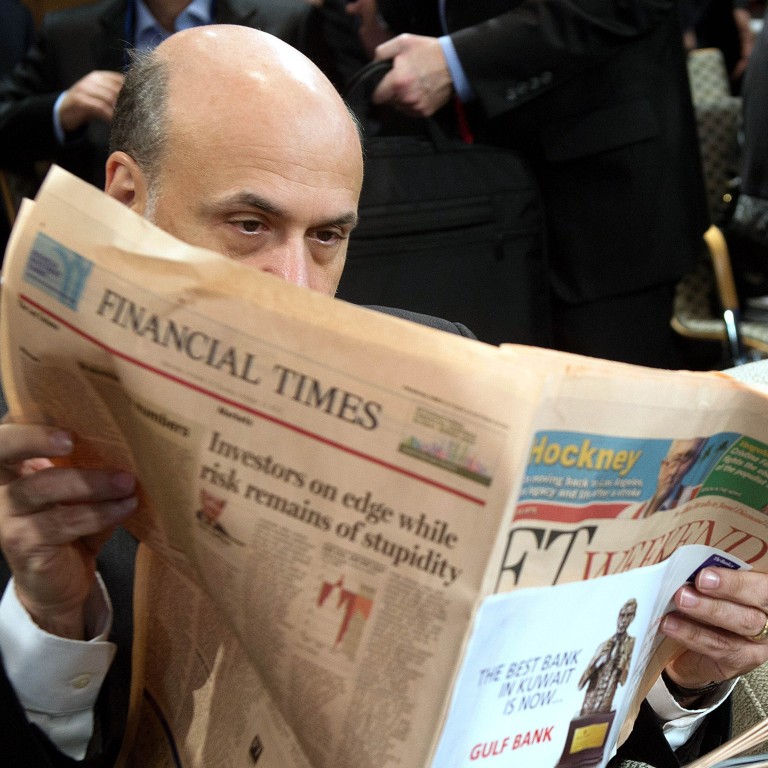
Facts left behind in debate over timing of Fed tapering
US quantitative easing has mostly benefited the rich, who obsess over when the party will end
Now that the United States government is functioning again, at least until battles resume in the new year over the debt ceiling, markets will begin to twitch over the question of when the Federal Reserve will begin its tapering of quantitative easing.

Quantitative easing and its tapering is a prime example. The people who are the most important supposed beneficiaries, the unemployed who will get jobs as QE pumps money into the economy and restores confidence, do not get a say, of course. But there are powerful vested interests at work influencing the debate. Worst of all, there is too much sloppy thinking and reporting going on.
The speculated on its front page last Friday that the Fed could begin cutting its asset purchases as early as December. Morgan Stanley, on the other hand, gives a 5 per cent likelihood of tapering next month, 10 per cent for December, 30 per cent for January, and 50 per cent for a March start.
When you think about it coolly, December tapering would have the advantage of taking some of the heat off Janet Yellen (assuming she is confirmed as Fed chairman), so she does not need to initiate a controversial process when she takes over from Ben Bernanke in February.
But major market players may try to obstruct any such thoughts by getting nervous over fresh convulsions about the debt ceiling or indeed over the very thought of tapering.
Sadly, although economists pretend that theirs is a scientific discipline, the so-called laws of economics are quite likely to be scuppered by human beings making decisions on whim or fantasy, and by politicians clinging to policies in the face of reason, logic and even fact.
Marc Faber, the so-called Dr Doom of Hong Kong and Chiang Mai, has questioned the very foundations of QE, claiming that it is a policy whose main achievements are to support the "Mayfair economy" - meaning the mega rich who can afford to live in the posh area of London - and to "boost the prices of Warhols".
He complained that "the people at the Fed are professors, academics. They have never worked a single day in the business of ordinary people. They don't understand that if you print money, it benefits basically a handful of people maybe, not even 5 per cent of the population."
Faber rejoices in being a maverick, but some other pillars of the City of London are also beginning to voice their concerns about where all the QE is taking the world. Nigel Wilson, the chief executive of Legal & General, one of largest insurers, said recently that "QE is a policy designed by the rich for the rich".
Adair Turner, a pillar of the British financial establishment, also pointed out in a recent speech that such had been the growth of financial markets that a mere 15 per cent of credit creation today actually went into investment, leaving the remaining 85 per cent swirling around to go into real estate or boosting other asset prices.
No wonder unemployment is above 7.5 per cent in the US and Britain, even as Wall Street is soaring. Yellen, who is regarded as a dove on the question of tapering, might want to ponder how much of the money the Fed is pumping in supposedly to sustain economic growth and curb unemployment is actually filtering through to the real economy.
On the other hand, for emerging-market countries, even those as large as Brazil, China and India, tapering poses real problems. We saw this recently when there were rumours that it was imminent and large sums fled back to the US, shaking global markets and currencies.

